Prof Justin O'Connor in "Smart Cities vs Creative Cities Symposium"

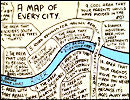 [Illustration from screen print of Prof Justin O'Connor's slide presentation.]The population and development behemoth is so multi-faceted that many of us feel like blind people trying to describe an elephant. Far richer than the bewildering 'policy porn' we are constantly subjected to by planners and growth merchants, the videos from this wonderful symposium provide vital clues to how we have been ambushed and sidelined by the nightmarish infrastructure juggernaut. "The ‘Creative City’ attempts to mobilise culture and creativity for city branding, urban regeneration and cultural industries growth, which also point to new forms of urban planning and governance. It has been closely associated with the “creative class” and the creative- entrepreneurial city in ways that have frequently become divisive and exclusionary, focusing on arts flagships, photogenic CBDs, and real estate profits. So too, cultural production has been reformatted under the rubric of the ‘creative industries’ in ways that foreground their contribution to economic growth. Increasingly calls have been for social justice, citizenship and the rights to the city, with a return of community and activist-focused arts activities, as well as new forms of ‘post-capitalist’ production communities." Source: "Smart City - Creative City", which is where the video of which this article is mostly a transcript, comes from, along with four others. The symposium took place at the Chunky Move – Dance Company Melbourne, Southbank, Australia on 15 June 2017.
[Illustration from screen print of Prof Justin O'Connor's slide presentation.]The population and development behemoth is so multi-faceted that many of us feel like blind people trying to describe an elephant. Far richer than the bewildering 'policy porn' we are constantly subjected to by planners and growth merchants, the videos from this wonderful symposium provide vital clues to how we have been ambushed and sidelined by the nightmarish infrastructure juggernaut. "The ‘Creative City’ attempts to mobilise culture and creativity for city branding, urban regeneration and cultural industries growth, which also point to new forms of urban planning and governance. It has been closely associated with the “creative class” and the creative- entrepreneurial city in ways that have frequently become divisive and exclusionary, focusing on arts flagships, photogenic CBDs, and real estate profits. So too, cultural production has been reformatted under the rubric of the ‘creative industries’ in ways that foreground their contribution to economic growth. Increasingly calls have been for social justice, citizenship and the rights to the city, with a return of community and activist-focused arts activities, as well as new forms of ‘post-capitalist’ production communities." Source: "Smart City - Creative City", which is where the video of which this article is mostly a transcript, comes from, along with four others. The symposium took place at the Chunky Move – Dance Company Melbourne, Southbank, Australia on 15 June 2017.
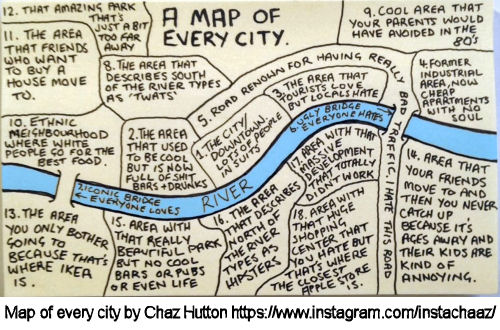
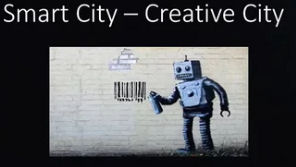
Why the symposium was important
Professor Justin O'Connor, with US Associate Professor Mark Andrejevic hosted a symposium called "Smart City Creative City, whose city is it," at the Chunky Move – Dance Company Melbourne, Southbank, Australia on 15 June 2017. O’Connor is Professor of Communications and Cultural Economy at Monash University and a visiting Professor in the School of Media and Design, Shanghai Jiaotong University. This unusually wide and deep symposium was profoundly helpful to me in understanding, from a new perspective, what has been going on behind the increasing infrastructure sloganeering babble that passes for government policy in Australian cities and elsewhere. There is a global background and history to the current disenfranchisement of citizens and residents from their own environments and properties in favour of giving free reign to midgets dwarfed by gigantic projects made possible by windfalls in global capitalism. This symposium articulates policy vaccuums that should provide bases for proactive rather than reactive citizen and resident demands and participation. Illustrations are taken by screenshot and cropped from O'Connor's slideshow, which you can see in the video. Links to other sites are introduced here by candobetter.net, notably to help explain the importance of certain names cited, such as Robert Moses, Henry Lefevbre and Manuel Castels. All subheadings have been introduced by the editor of candobetter.net.
Disappearance of the smart city - Justin O'Connor introduction to symposium
[Transcript by Sheila Newman]
JUSTIN O'CONNOR: I work in area of creative cites, cultural economy, cultural industries, urban cultural policy, that kind of thing, and Mark Andrevich works in the field of urban media, big data, censors, drones , that kind of thing and, we've been noticing, really over the last two years certainly, the rise, the idea, of the 'smart city'. And we wanted to try and see where these two [the 'smart city' and the 'creative city'] fitted together, or where their two trajectories intersected - or not. But also, there's critics of both of these agendas and we wanted to see what could be possibly retrieved from them. What can - how can we - [?] see a positive agenda both individually and as a kind of joint confluence of two quite powerful agendas.
'Policy porn'
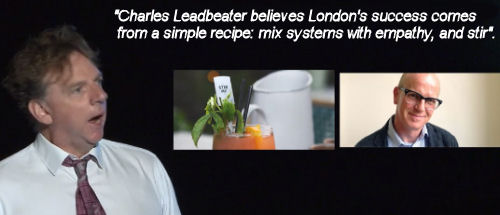
So I'm just going to talk a bit about where I think, really, the creative city idea came from before handing over to Seb and Mark. So, I was looking at this and - you all know what 'gastro-porn' is - well I've decided to start calling this 'policy porn'. This is our man, Charles Leadbeater, who's in Melbourne at the moment [points to slide of Charles Leadbeater quote illustrated here.]
I call it 'policy porn' in the sense it involves models you're never likely to meet in real life. So, London - "London's success comes from a simple recipe: mix systems with empathy and stir." [Indicates amazement.] You know. Has anybody ever been to London? Anyway, I won't go there, but the other aspect of policy porn is, increasingly, it's about - you look, you go to an event, you look at it, looks great, doesn't it, and then nobody actually does anything about it. Which is to say that creative cities is now completely, in many respects, almost a redundant agenda. It has very little traction. It's these kind of silly events, really. And this has been going like this for some time.
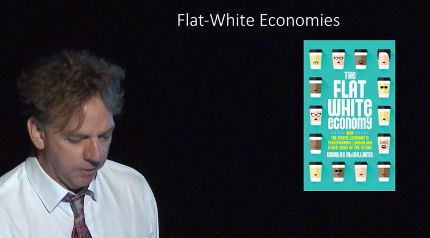
This is a book. I think this is 2014, a particularly bad book, but all about this is now a 'flat white economy'. Lots of 'bright young things' somewhere in Shoreditch drinking flat whites, which, in the UK is seen as a kind of metropolitan set drink, you know. It's a very 'new' kind of thing.
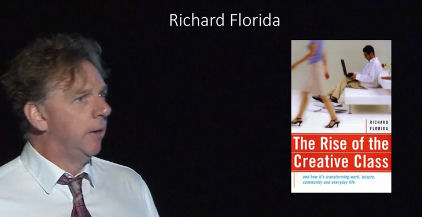
And it goes, obviously futher back, to 2003. This is Richard Florida [refers to overhead with picture of book called Rise of the creative class by Richard Florida.] At least there's statistics in this book. For all the criticisms that it's drawn, at least there's statistics there somewhere.
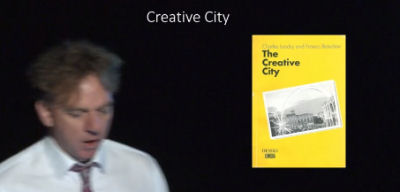
But I wanted to go back to this one, [Indicates slide of book, Creative City by Charles Landry.] Charles Landry's account of the creative city in the mid 1990s, which really came from work that he'd done over the previous decade. And Charles isn't averse to a bit of policy porn himself really, but he, I think, in this book, you know, there's some serious attempts to rethink what the city is. And in this book - it's a very short book - you know, it's the post industrial city, it's about to, it's disappearing as we speak. And what culture does is not, oh, replace - let's have new employment from culture - which, I mean, it's partly in there - but it gives the chance to rethink what the city is.
After a century of top-down, modernist planning - you know, the Robert Moses meat-axe approach to town planning - it's a chance to rethink what it is. And, in three areas, really, it's a kind of wholistic attempt to look at the city. Let's look at the city, including its cultural offer, to rethink what do we mean when we're doing town planning or urban planning or urban vision.
And a lot of it comes back from Jonathan Raban's very seminal Soft City, 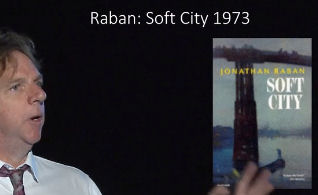 a book from 1973, where he says, you know, 'The city is soft'. It's not this hard city of demographics and statistics. It's actually moulded by the humans who use it. And it's seen as a sort of first step out of that older idea of the industrial city.
a book from 1973, where he says, you know, 'The city is soft'. It's not this hard city of demographics and statistics. It's actually moulded by the humans who use it. And it's seen as a sort of first step out of that older idea of the industrial city.
And Charles Landry is looking back to that and I think it was a real attempt to ask some fundamental questions about the city, before that agenda may be turned somewhere else.

Cultural Consumption: from roots to image capital
One of the things that was very strong, strongly coming out of the creative city agenda was this idea of 'cultural consumption'. [See 'cultural consumption examples' illustration done by candobetter.net editor.] And this is one of the very first ones in '76, I think, it was, in Boston, got this in London, same kind of time, bit later, Fisherman's Wharf. I'll just go through it. Very famously, Albert Dock in Liverpool.
There was this big 'moment' towards post-modernism, and of course, what's been going on here in Melbourne, from the mid-1990s. And, it's easy, as we'll see in a minute, it's easy to see this as a kind of cultural consumption-driven gentrification etcetera, which is one of the large criticisms of this agenda, but, in fact, what it was at its best, was an attempt to rethink the kind of cultural offer of the city. You know, it was a return to some of the 19th century 'city beautiful' movement. Problematic, of course, in themselves, but 'civic pride' to reboot the old opera house-library-theatre cultural infrastructure of the city; to rethink, well, how might we reinvent this infrastructure for a new post-industrial city and a post-industrial population.

So, I think there was a serious core in that. And, again Bilbao, with the Guggenheim, seen often as a purely kind of top-down consumer driven thing, it actually came out of a deep rethinking of what that city was. And part of [what] the creative city was was an attempt by cities like - where I'm from - Manchester - or Glasgow or Bilbao - cities could say, well, we're not Paris or Venice or, you know, Rome, but we also have a culture and we can also use it to kind of rethink who we are. So I think there's a serious core at it.
[Points to slide of Sage, Gateshead, UK] And this is much later this is 2008, I believe, up in Gateshead, a very deprived area of the UK. And I'll just go through these - [slides of Tate Modern, MONA, West Kowloon, Hong Kong] obvious icons, MONA also, there in Hobart. And this is now, of course, as many of you know now, it's now amped up, souped up, kind of attempts. So we've got West Kowloon in Hong Kong, which is a kind of massive multi-billion-trillion Hong Kong development to kind of give Hong Kong some culture. It's no longer the financial capital of Asia, well let's have some culture there, so we'll knock down the old Kowloon Village and put some of this in. You know, massive real-estate things. UAE's at it, the Emirates are now building really large-scale stuff as - and of course, with lots of problems, as - I've forgotten his name - the American guy writing about the kind of labour involved in building these kind of things. [Slide of Singapore art museum] Singapore of course: "Oh, we're no longer Disneyland with the death penalty, we've got an art gallery." And Shang Hai, which - I won't go into detail - which is this absolutely blatant - they don't bother dressing it up in any kind of artistic language - this is 'image capital' and the use of massive investment and [indistinct].
So, it's come a long way from there, [the serious core referred to] so it's highly problematic, but I wanted to just go back and say, here had some real roots in what rethinking the city was.
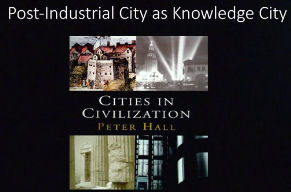
[Slide: Post industrial City as Knowledge City: Peter Hall, Cities in Civilisation]
Knowledge cities and technopolies
And, of course, if we go back to that period, the mid 1990s, the work of Peter Hall comes out, you know, not just of the urban regeneration element that Charles Landry was involved in, but he's been writing with Manuel Castels, he's into the whole idea of technopols, technopolies, he knows about the [indistinct], he's obviously rooted in the planning and architectural world. So he's trying to understand what the post industrial city is by this quite massive kind of reappraisal of what cities have been in history. And he gives the character of cities as 'knowledge', centers of knowledge: You know, we don't just make things now, that's the industrial city. We're 'deal-makers', we're 'ideas-makers', etcetera. Again, at its heart, this was an attempt to rethink what cities do and what they might be.
Cultural productive system and investment in big buildings
Creative city took the cultural productive system end of this; that here in these cities they were producing culture in different ways and - you know, the old idea of the bohemian artist in their quarters - that these were large-scale systems rooted in cities that were producing culture at a new level. And of course, this fed into the cultural creative industries agenda, which often is reduced to this kind of stuff. [Refers to cultural and creative industries slide] 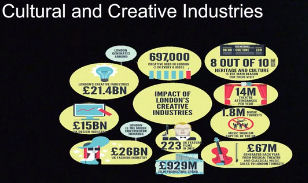 You know, 1.5m, 2.5m, blah, blah, blah, blah, blah, but at its heart, it was about a new kind of economy giving new kinds of livlihoods to people, in a way that was a kind of benign economy. It was networked, it was highly educated, it had 'positive externalities' as the economists say, it's affected the city in good ways. So, it wasn't just, 'Oh, let's get some more jobs and tourism' etcetera. It was about rethinking the cultural economy city as a benign economy. [Slides of Soho, London and of Lower East Side, New York; Northern Quarter, Manchester, UK; Hoxton, London; White Cube, Hoxton; Shorditch; Westergasfabrik, Amsterdam; Kulturbrauerei, Berlin; La Friche, Marseilles; Santral, Istanbul; Witte Dame, Eindhoven; Vinzavod, Moscow; Garage, Moscow; cable Factory, Helsinki, Finland; Collingwood, Melbourne.] And of course we all know how this is fed now. It's a different city from these kind of more organic things. But also now very increasingly investment in big buildings. You know, the revitalisation of the old 19th century infrastructure [refers to above slides] there's a million examples I could have taken. These are just places I have been to. And of course, Moscow, Russia, now of course many of the Asian cities are picking up into these things, which I won't show [referring to slideshow.]
You know, 1.5m, 2.5m, blah, blah, blah, blah, blah, but at its heart, it was about a new kind of economy giving new kinds of livlihoods to people, in a way that was a kind of benign economy. It was networked, it was highly educated, it had 'positive externalities' as the economists say, it's affected the city in good ways. So, it wasn't just, 'Oh, let's get some more jobs and tourism' etcetera. It was about rethinking the cultural economy city as a benign economy. [Slides of Soho, London and of Lower East Side, New York; Northern Quarter, Manchester, UK; Hoxton, London; White Cube, Hoxton; Shorditch; Westergasfabrik, Amsterdam; Kulturbrauerei, Berlin; La Friche, Marseilles; Santral, Istanbul; Witte Dame, Eindhoven; Vinzavod, Moscow; Garage, Moscow; cable Factory, Helsinki, Finland; Collingwood, Melbourne.] And of course we all know how this is fed now. It's a different city from these kind of more organic things. But also now very increasingly investment in big buildings. You know, the revitalisation of the old 19th century infrastructure [refers to above slides] there's a million examples I could have taken. These are just places I have been to. And of course, Moscow, Russia, now of course many of the Asian cities are picking up into these things, which I won't show [referring to slideshow.]
Not comfortable places at all
So, we've got this huge investment in kind of spaces and around cultural production that's really kind of transforming the city. 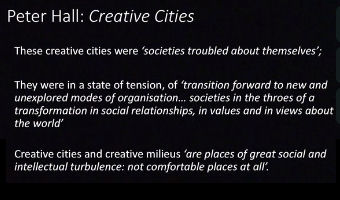 And it's really just - again - coming back to that original thinking, or original kind of moment, and thinking, you know, what exactly is a creative city? And I think this will be picked up a bit by certain others [means other speakers] as we go through, that - and Peter Hall says, when asked it - this is not in his book, this was an article written after his book came out - you know, what is the creative city? And he said, [that] 'These creative cities are societies troubled about themselves, they're in a state of tension', "of transition forward to new and unexplored modes of organisation ... societies in the throes of a tranformation in social relationships, in values and in views about the world." [Citing from slide.] And, of course, that means they 'are places of great social and intellectual turbulence. They're not comfortable places at all'.
And it's really just - again - coming back to that original thinking, or original kind of moment, and thinking, you know, what exactly is a creative city? And I think this will be picked up a bit by certain others [means other speakers] as we go through, that - and Peter Hall says, when asked it - this is not in his book, this was an article written after his book came out - you know, what is the creative city? And he said, [that] 'These creative cities are societies troubled about themselves, they're in a state of tension', "of transition forward to new and unexplored modes of organisation ... societies in the throes of a tranformation in social relationships, in values and in views about the world." [Citing from slide.] And, of course, that means they 'are places of great social and intellectual turbulence. They're not comfortable places at all'.
Now, let's flick you back to Charles Leadbeater: You can have it all! you know, you can just add recipes and mix and shake and you'll get a great city. It's not too bad, in fact, just leave it to us - (Aside: And I think, and I'll leave some of those ideas to the people talking more about smart cities) - and, this is somehow - we're going to transform ourselves; we don't really have to do anything, except buy an iphone perhaps. And I think he's just trying to understand then, what is at stake now, because, that, to me, describes us now.
We're certainly not in a comfortable place, we're certainly in social turbulence. Intellectual turbulence? I'm not sure. I think that's something we have to start doing, because at the moment, in many respects, we're in a space of intellectual quiescence; intellectual kind of dumbing down, in many respects - certainly in the area of public policy. [Slide citing Ezra Pound]

Questions artists ask
So, the idea, 'Artists are the antennae of the race': this is the classic statement of the avant-guarde - early 19th century, 20th century avant-guarde. But, what we're talking about here is what artists thought they were doing in looking forward. [Aside: adverts to other speakers] But what they're looking forward at is not just rule-breaking or innovating in art, it's about trying to understand what is happening around them. And I think that key role for culture in understanding what are these spaces of turbulence; how are we moving from one set of values to another; how do we explain the crisis we are in; is something that cultural policy, in part, is about, needs to do. That's what it's often been about.
Important questions reduced to econometrics
And my concern at the moment, certainly from the creative cities point of view, is that there is none of those questions being asked within cultural policy at the moment. These questions are reduced, usually, to econometrics. You know, the main task of cultural policy is to show what economic impact it has for other departments. And there's no other department - health, education - there's no other department that's asked to express its main value through how it hits on somebody else's agenda. The question of cultural value, what culture does, how it should fit within the city, or how it adds to the city, these questions are not being asked on its own terms.
[Slide 'Collective Sensorium': Towards an Aesthetic of Performative Defiance: Autonomy and Weltbezug by Sebastian Olma] We talked about artists as the antennae of the race. This is Seb's book, which I've put up there [referring to slide] because he paid me to [jokingly]. Collective sensorium: This is a part of what culture is. How do we use our senses collectively to understand the crisis through which we're going, and I think these are some things we need to ask.
We need to make demands of the policy-makers
So, here we are, in the time of the creative city, in the time of the smart city, and yet some fundamental questions about what the city is for are barely being asked, certainly at the level of policy and urban planning. They are all on the periphery of that, but they are not being asked properly. And I think it's something that we need to demand of our policy-makers; that these are now big agendas that come with large budgets, they come with large visions; they have the ability to define what a city is and how we work within it, and yet, as I say, those deeper questions, some fundamental questions that were being asked in the mid 90s are no longer being asked.
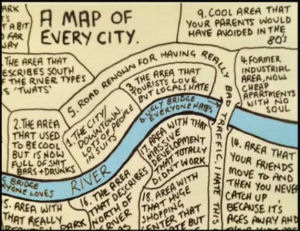
Melbourne will become more uncomfortable; we must avoid being stuck with 'changeless change'.
So, without getting too Henri Lefebvre on you, the city is to be built, we're now at an uncomfortable place - less so in Melbourne than in other places, but it will come - we're in an uncomfortable place of transition and, unless we find ways to understand how we're going to move forward, we're going to be stuck with 'changeless change'.

 Do you ever wonder what our society would look like if everyday people were calling the shots? If everyday people had more influence rather than a few privileged rich and large corporations? Would we have sold our public utilities? Would the centre of Melbourne look less like Manhattan; have less poorly constructed and dangerous residential towers? Would citizens be forced into selling off the backyards of family homes to pay their outrageous mortgages? Would we ever have allowed negative gearing and its looming financial tsunami?
Do you ever wonder what our society would look like if everyday people were calling the shots? If everyday people had more influence rather than a few privileged rich and large corporations? Would we have sold our public utilities? Would the centre of Melbourne look less like Manhattan; have less poorly constructed and dangerous residential towers? Would citizens be forced into selling off the backyards of family homes to pay their outrageous mortgages? Would we ever have allowed negative gearing and its looming financial tsunami?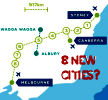 Victorians and Australians need to initiate a new democratic process and hold to it. Residents' action groups now find themselves at the coal-face of democracy. They are the front line representing the future of our cities, states and this country. Their task is to identify, defend, and establish new property, community and natural environment rights and the implied citizens' rights that accompany these rights. We can no longer rely on the traditional environment NGOs or alternative political parties to represent us on these fundamental problems. They have been silenced by one means or another. Twenty years ago no-one would have contemplated making Planning Minister Mr Wynn's statements on drive-time ABC radio that we have to fit in 10 million more people in Victoria with four more million in Melbourne. This insane proposition is not the end of it by any means, either. Not only would Melbourne keep on growing, but most state governments are trying to force similar changes on their residents and the property development lobby has in the past admitted to the desire for something like 50 new mega cities around Australia, with eight new ones currently on the drawing board. The scale of these commercial projects will demand authoritarian regimes similar to China's. The
Victorians and Australians need to initiate a new democratic process and hold to it. Residents' action groups now find themselves at the coal-face of democracy. They are the front line representing the future of our cities, states and this country. Their task is to identify, defend, and establish new property, community and natural environment rights and the implied citizens' rights that accompany these rights. We can no longer rely on the traditional environment NGOs or alternative political parties to represent us on these fundamental problems. They have been silenced by one means or another. Twenty years ago no-one would have contemplated making Planning Minister Mr Wynn's statements on drive-time ABC radio that we have to fit in 10 million more people in Victoria with four more million in Melbourne. This insane proposition is not the end of it by any means, either. Not only would Melbourne keep on growing, but most state governments are trying to force similar changes on their residents and the property development lobby has in the past admitted to the desire for something like 50 new mega cities around Australia, with eight new ones currently on the drawing board. The scale of these commercial projects will demand authoritarian regimes similar to China's. The 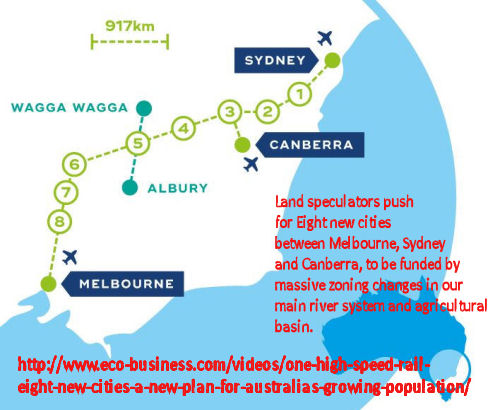
 3CR talkS to Michael Bayliss from Planning Backlash about the development woes facing Melbourne and how this issue will only become more serious in light of plans to further deregulate the planning system. Whether it is increasing densities in the inner suburbs or developing the urban fringe, we are not getting the standard of development that Melbourne requires as we proceed to a low carbon economy. (Article adapted from one published on 3CR at
3CR talkS to Michael Bayliss from Planning Backlash about the development woes facing Melbourne and how this issue will only become more serious in light of plans to further deregulate the planning system. Whether it is increasing densities in the inner suburbs or developing the urban fringe, we are not getting the standard of development that Melbourne requires as we proceed to a low carbon economy. (Article adapted from one published on 3CR at  This article is adapted from a talk with power point given to U3A Deepene on March 15th 2017 by past president of VicTas branch of Sustainable Population Australia, now secretary, Jill Quirk, who is also now the secretary of Protectors of Public Lands Victoria. The talk explored the noticeable effects of rapid population growth and compared some past and current projections for Melbourne’s population to mid–century and beyond, considering what Melbourne on current trends might be like in 50 years. These comparisons, not usually available, make it clear how Victorian governments have increasingly snowed citizens with every successive plan for Melbourne.
This article is adapted from a talk with power point given to U3A Deepene on March 15th 2017 by past president of VicTas branch of Sustainable Population Australia, now secretary, Jill Quirk, who is also now the secretary of Protectors of Public Lands Victoria. The talk explored the noticeable effects of rapid population growth and compared some past and current projections for Melbourne’s population to mid–century and beyond, considering what Melbourne on current trends might be like in 50 years. These comparisons, not usually available, make it clear how Victorian governments have increasingly snowed citizens with every successive plan for Melbourne.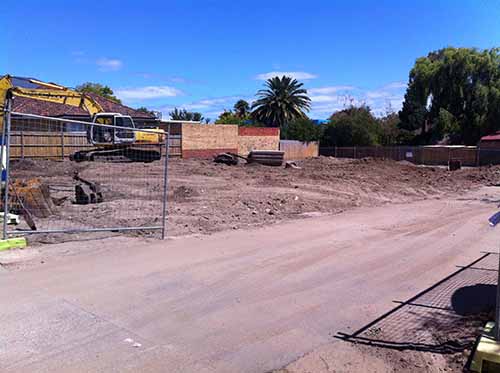
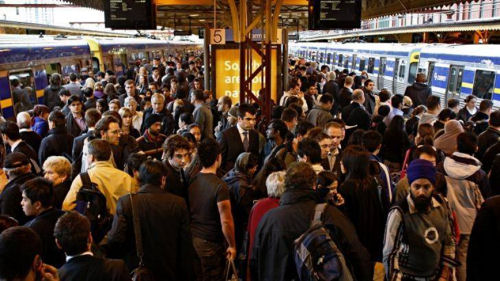

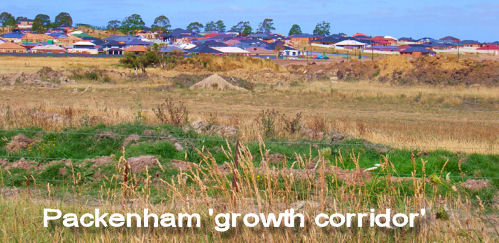 packenham-growth-corridor2.jpg
packenham-growth-corridor2.jpg
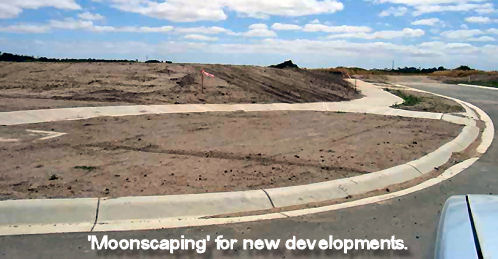
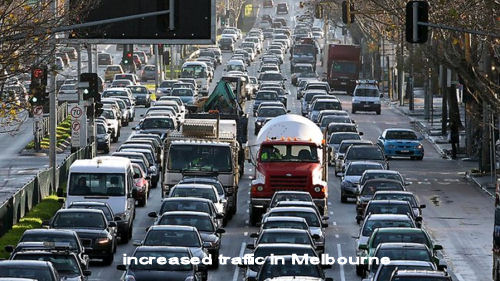
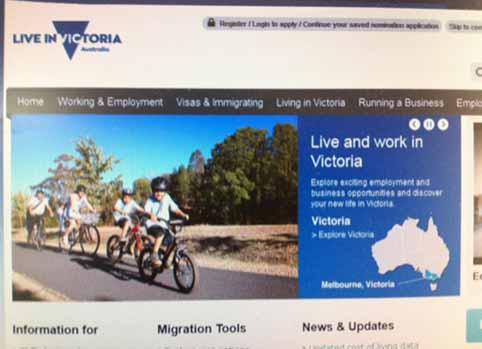
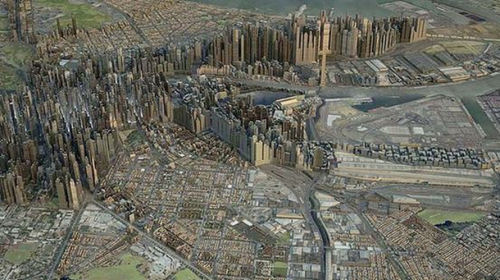
 Stop Press - Just received this minute. It seems that Josh Frydenberg, Federal member for Boroondara and Minister of Environment, has put an interim protection order on St Kilda Road, as it has been sponsored for National Heritage Protection. I knew this has been proposed by a leader of the Liberals and a leader of Labor. A number of us wrote to Josh urging him to do it. Great news!
Stop Press - Just received this minute. It seems that Josh Frydenberg, Federal member for Boroondara and Minister of Environment, has put an interim protection order on St Kilda Road, as it has been sponsored for National Heritage Protection. I knew this has been proposed by a leader of the Liberals and a leader of Labor. A number of us wrote to Josh urging him to do it. Great news! Community outrage continues in the battle to protect the iconic Dandenong Ranges from inappropriate development following Knox Council’s recent failure to adopt the independent Panel recommendation for mandatory maximum height controls in the Upper Ferntree Gully Activity Centre. Knox Appropriate Development Alliance President, Catherine Kruse said that a petition to the State Government calling for their intervention is gathering momentum with interest from across Victoria. A rally is also planned for Monday February 27th at the Knox Council offices.
Community outrage continues in the battle to protect the iconic Dandenong Ranges from inappropriate development following Knox Council’s recent failure to adopt the independent Panel recommendation for mandatory maximum height controls in the Upper Ferntree Gully Activity Centre. Knox Appropriate Development Alliance President, Catherine Kruse said that a petition to the State Government calling for their intervention is gathering momentum with interest from across Victoria. A rally is also planned for Monday February 27th at the Knox Council offices.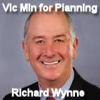

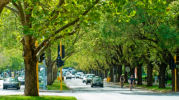 (Submission inside) Plans for the proposed underground railway from north west to south east of the city are not yet finalised. On Friday the 13th the Minister of Planning said the location of the proposed Domain station may be moved and yet the Age announces 14th Jan that work would begin on Monday the 16th. This is clearly vandalism. They are going to start destroying trees and moving gas and sewer lines at the Domain. Remember that St Kilda Road is heritage listed and Heritage Victoria have received thousands of objections and Heritage Vic have not yet made a determination. One has to wonder how much pressure they are under by this State Government in their determination to start digging. We are sick to death of hearing them say they are 'shovel-ready'. How dare the government say that the damage to St Kilda road will be worth it for the advantage the rail will give. The necessity for this rail is being questioned by respected planners in Melbourne. There are far more important road and rail projects that are needed first.
(Submission inside) Plans for the proposed underground railway from north west to south east of the city are not yet finalised. On Friday the 13th the Minister of Planning said the location of the proposed Domain station may be moved and yet the Age announces 14th Jan that work would begin on Monday the 16th. This is clearly vandalism. They are going to start destroying trees and moving gas and sewer lines at the Domain. Remember that St Kilda Road is heritage listed and Heritage Victoria have received thousands of objections and Heritage Vic have not yet made a determination. One has to wonder how much pressure they are under by this State Government in their determination to start digging. We are sick to death of hearing them say they are 'shovel-ready'. How dare the government say that the damage to St Kilda road will be worth it for the advantage the rail will give. The necessity for this rail is being questioned by respected planners in Melbourne. There are far more important road and rail projects that are needed first. 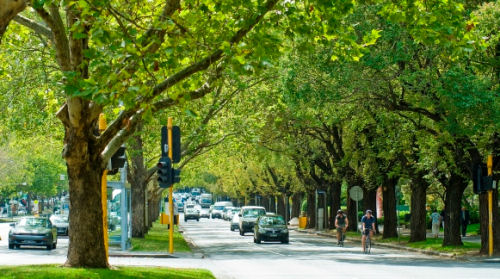
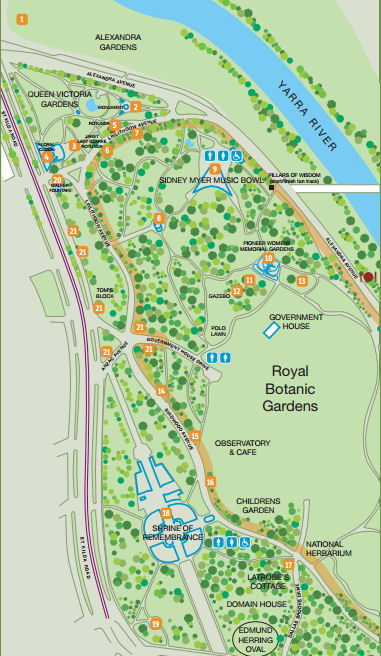


 You are deep in an enjoyable conversation when suddenly a loud blustering person arrives, diverting all the attention of your group to her. She shows no curiosity as to what you were discussing before she arrived, relating a story about herself as though assuming everyone had been waiting for her arrival to come alive ..
You are deep in an enjoyable conversation when suddenly a loud blustering person arrives, diverting all the attention of your group to her. She shows no curiosity as to what you were discussing before she arrived, relating a story about herself as though assuming everyone had been waiting for her arrival to come alive ..
 George Soros funded and orchestrated the refugee crisis in Europe, opening the gates to allow refugees and terrorists into the continent. Soros’s agenda has always been about destroying national sovereignty and national borders.
George Soros funded and orchestrated the refugee crisis in Europe, opening the gates to allow refugees and terrorists into the continent. Soros’s agenda has always been about destroying national sovereignty and national borders. 
 Victoria Market, as we know it, is under threat. The City of Melbourne, along with the top end of town, has plans to reduce and gentrify our historic market, paying lip service only to its valued heritage and the important service it provides to the wider Melbourne community, in particular, its role in keeping food quality standards high, food prices down, while providing astounding diversity.
Victoria Market, as we know it, is under threat. The City of Melbourne, along with the top end of town, has plans to reduce and gentrify our historic market, paying lip service only to its valued heritage and the important service it provides to the wider Melbourne community, in particular, its role in keeping food quality standards high, food prices down, while providing astounding diversity. 

 Video and text of Sheila Newman's speech at the Animal Justice Party's event, "Policy basis for Kangaroo treatment in the ACT," 5 April 2016: Harvesting, damage mitigation and culling probably actually accelerate population growth in roos because the smaller ones survive and adapt by sexually maturing earlier - which speeds up fertility turnover. Since 2003 DNA studies have shown that ACT and southern NSW roos, both male and female, migrate at significant rates and for longer distances than the ACT model assumes. Migration has probably been mistaken for fertility, rendering ACT roo counts unreliable and invalid. The ACT needs to stop culling and widen its research base to consider various genetically based algorithms that naturally restrain fertility opportunities in kangaroos.
Video and text of Sheila Newman's speech at the Animal Justice Party's event, "Policy basis for Kangaroo treatment in the ACT," 5 April 2016: Harvesting, damage mitigation and culling probably actually accelerate population growth in roos because the smaller ones survive and adapt by sexually maturing earlier - which speeds up fertility turnover. Since 2003 DNA studies have shown that ACT and southern NSW roos, both male and female, migrate at significant rates and for longer distances than the ACT model assumes. Migration has probably been mistaken for fertility, rendering ACT roo counts unreliable and invalid. The ACT needs to stop culling and widen its research base to consider various genetically based algorithms that naturally restrain fertility opportunities in kangaroos.
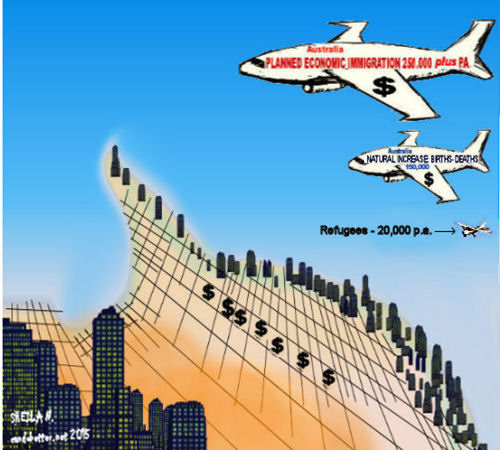
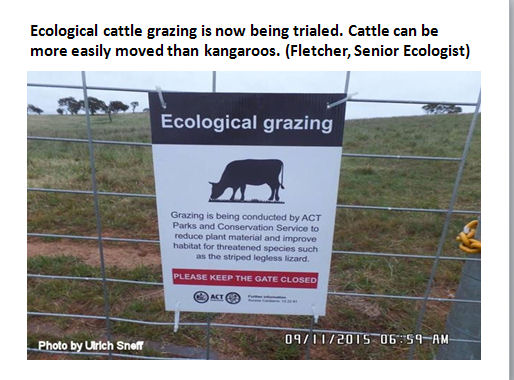
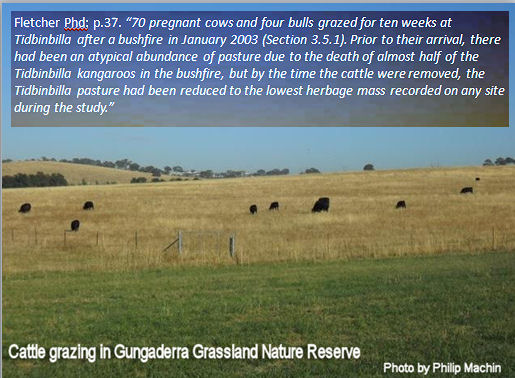
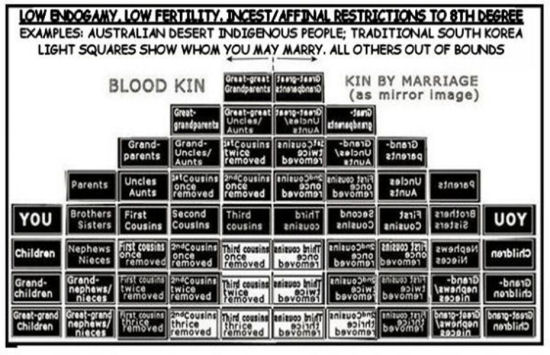

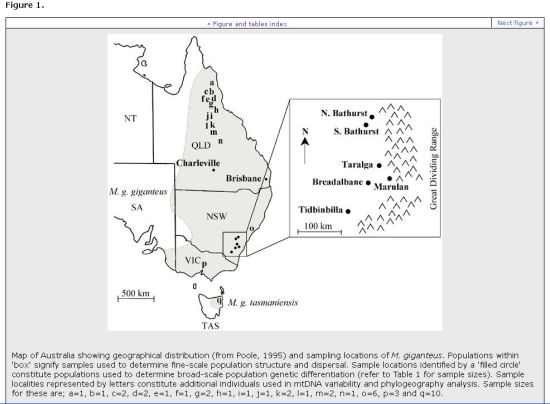
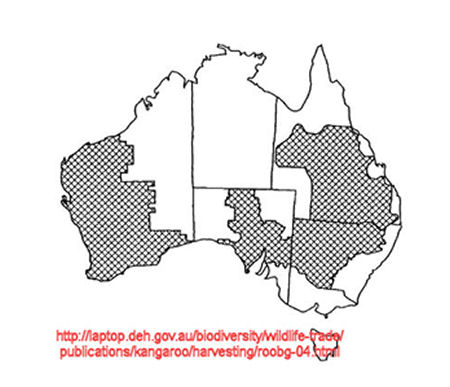
 Saturday April 23 rd at 1.00pm to 4.00 pm. Venue: Hawthorn Arts Centre, 360 Burwood Rd. Hawthorn Vic 3122. Members and non-members are welcome to attend. Speakers are: Mark Allen, Founder, Population, Permaculture and Planning; Dr Katharine Betts, Population Sociologist, Swinburne University; Hon Kelvin Thomson MP, Environmentalist and high profile sustainable population advocate; Rod Quantock, Environmental activist, Much loved comedian. M.C. SPAVicTas President Michael Bayliss. Audience Q&A and discussion will follow (Free parking behind venue or at nearby Glenferrie Station).
Saturday April 23 rd at 1.00pm to 4.00 pm. Venue: Hawthorn Arts Centre, 360 Burwood Rd. Hawthorn Vic 3122. Members and non-members are welcome to attend. Speakers are: Mark Allen, Founder, Population, Permaculture and Planning; Dr Katharine Betts, Population Sociologist, Swinburne University; Hon Kelvin Thomson MP, Environmentalist and high profile sustainable population advocate; Rod Quantock, Environmental activist, Much loved comedian. M.C. SPAVicTas President Michael Bayliss. Audience Q&A and discussion will follow (Free parking behind venue or at nearby Glenferrie Station). 



 It is just possible that the terrorist attack warnings by both the PM and ASIO head, Duncan Lewis, and the announcement of a hefty hike in defence spending was just a coincidence. But for those cynics who claim otherwise, let me point out that at this very moment we already have more than 1000 (perhaps as many as 4000) terrorists running riot in Canberra and doing so with the full knowledge and encouragement of our government.
It is just possible that the terrorist attack warnings by both the PM and ASIO head, Duncan Lewis, and the announcement of a hefty hike in defence spending was just a coincidence. But for those cynics who claim otherwise, let me point out that at this very moment we already have more than 1000 (perhaps as many as 4000) terrorists running riot in Canberra and doing so with the full knowledge and encouragement of our government. 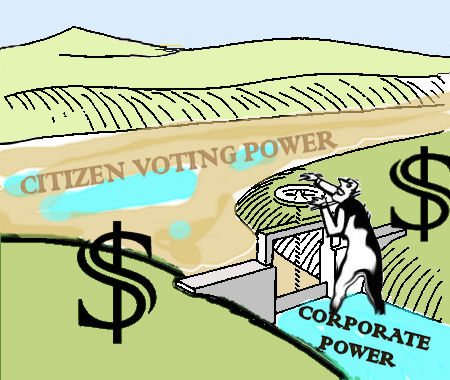 It is just possible that the terrorist attack warnings by both the PM and ASIO head, Duncan Lewis, and the announcement of a hefty hike in defence spending was just a coincidence. But for those cynics who claim otherwise, let me point out that at this very moment we already have more than 1000 (perhaps as many as 4000) terrorists running riot in Canberra and doing so with the full knowledge and encouragement of our government.
It is just possible that the terrorist attack warnings by both the PM and ASIO head, Duncan Lewis, and the announcement of a hefty hike in defence spending was just a coincidence. But for those cynics who claim otherwise, let me point out that at this very moment we already have more than 1000 (perhaps as many as 4000) terrorists running riot in Canberra and doing so with the full knowledge and encouragement of our government.  Estonian House, West Brunswick, 24th February
Estonian House, West Brunswick, 24th February As previously, there was the muffled threat that this new version of suburban planning, which can only increase occupier density in a municipality with the highest or second highest density in greater Melbourne, was driven by State Government (of a different stripe, but the threat remained the same), and the heavy implication that it might be worse if we did not agree.
As previously, there was the muffled threat that this new version of suburban planning, which can only increase occupier density in a municipality with the highest or second highest density in greater Melbourne, was driven by State Government (of a different stripe, but the threat remained the same), and the heavy implication that it might be worse if we did not agree. I went to the one [meeting] at Pascoe Vale neighbourhood Community Hall. People were hostile. They [Council staff] said they were seeking community input for their submission. One resident said;
I went to the one [meeting] at Pascoe Vale neighbourhood Community Hall. People were hostile. They [Council staff] said they were seeking community input for their submission. One resident said;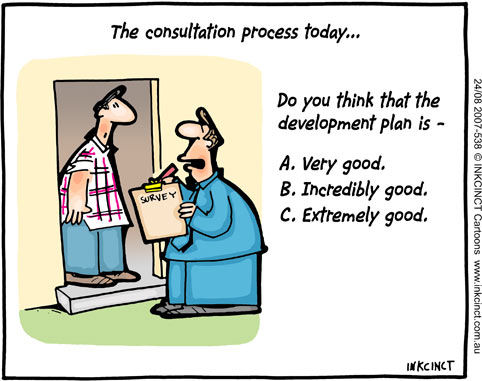
 Moreland residents are presently being treated to a new round of ‘consultations’ throughout the municipality, and being indoctrinated by Council staff on the assumed benefits of residential rezoning (radically increased residential densities) and of neighbourhood activity centres as a central feature of the ’20-minute city’. Under this new feudalism, it is expected that residents will access all of their basic material needs and services within a 20 minute walk, bicycle trip, or by public transport. Superficially this may seem a nice idea. On closer scrutiny it is fanciful, so expensive that the necessary additional infrastructure will never be provided, and little more than a pretext for an atrophied Australian business culture dependent upon population growth and capital widening; incapable of building a genuinely modern economy. Selling dirt to China and building a national ponzi economy based on population growth and making each other cappuccinos. Dumb and dumber dressed up as community building and environmental responsibility, but, very politically fashionable – so much so that the left enthusiastically does the economic right’s public relations for it. The Greens on the Moreland Council are a case in point.
Moreland residents are presently being treated to a new round of ‘consultations’ throughout the municipality, and being indoctrinated by Council staff on the assumed benefits of residential rezoning (radically increased residential densities) and of neighbourhood activity centres as a central feature of the ’20-minute city’. Under this new feudalism, it is expected that residents will access all of their basic material needs and services within a 20 minute walk, bicycle trip, or by public transport. Superficially this may seem a nice idea. On closer scrutiny it is fanciful, so expensive that the necessary additional infrastructure will never be provided, and little more than a pretext for an atrophied Australian business culture dependent upon population growth and capital widening; incapable of building a genuinely modern economy. Selling dirt to China and building a national ponzi economy based on population growth and making each other cappuccinos. Dumb and dumber dressed up as community building and environmental responsibility, but, very politically fashionable – so much so that the left enthusiastically does the economic right’s public relations for it. The Greens on the Moreland Council are a case in point.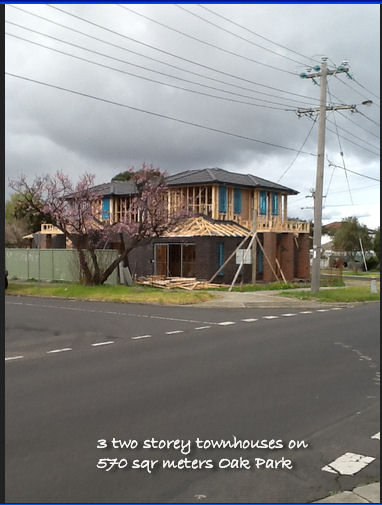

 This article contains a speech by Kelvin Thomson, critical of a motion to change environmental law by George Christensen, Member for Dawson, Queensland. Monday, 8 February 2016, House of Representatives, Chamber Speech, page 22 Hansard proofs.
This article contains a speech by Kelvin Thomson, critical of a motion to change environmental law by George Christensen, Member for Dawson, Queensland. Monday, 8 February 2016, House of Representatives, Chamber Speech, page 22 Hansard proofs.
 Australian comedian Barry Humphries' humour identified and targeted a world of pleasant streets and gardens that is now under threat. We've stopped laughing, but is it too late?
Australian comedian Barry Humphries' humour identified and targeted a world of pleasant streets and gardens that is now under threat. We've stopped laughing, but is it too late?

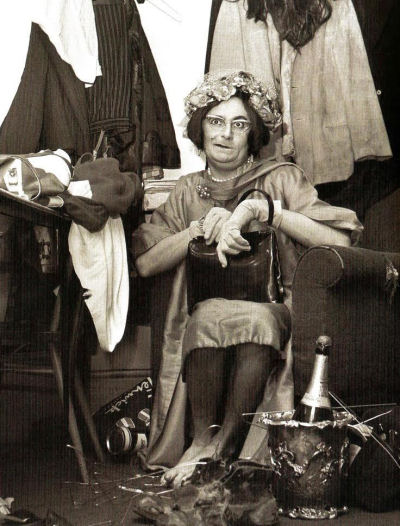

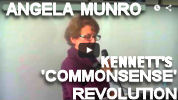
 Video inside: The Kennett era in Victoria represented a neoliberal makeover of government, state and local. Swept to power during a global property collapse in 1992, the Liberal premier imposed radical and rapid transformation without electoral platform or forewarning. It was a classic case of the international phenomenon documented by Naomi Klein in Shock Doctrine. This talk focuses on the transformation of the core municipality of greater Melbourne – the Melbourne City Council in its historic context. It was disempowered and its citizens disenfranchised between 1992-9 to give the Growth Machine of property interests and state government free rein. That Machine emerged from the mid 1970s, being reinforced under the previous Labor government, 1982-92, as the manufacturing sector was phased out federally; cranes on the skyline was Premier Cain’s catchcry. Kennett capitalized on a political and institutional tradition in which property interests (entrenched in the Victorian Legislative Council) dominated from inception. Other Australian colonies were founded by government rather than land seekers.
Video inside: The Kennett era in Victoria represented a neoliberal makeover of government, state and local. Swept to power during a global property collapse in 1992, the Liberal premier imposed radical and rapid transformation without electoral platform or forewarning. It was a classic case of the international phenomenon documented by Naomi Klein in Shock Doctrine. This talk focuses on the transformation of the core municipality of greater Melbourne – the Melbourne City Council in its historic context. It was disempowered and its citizens disenfranchised between 1992-9 to give the Growth Machine of property interests and state government free rein. That Machine emerged from the mid 1970s, being reinforced under the previous Labor government, 1982-92, as the manufacturing sector was phased out federally; cranes on the skyline was Premier Cain’s catchcry. Kennett capitalized on a political and institutional tradition in which property interests (entrenched in the Victorian Legislative Council) dominated from inception. Other Australian colonies were founded by government rather than land seekers. This article is the text of a speech by Sheila Newman about how Kennett Government policies pushed up population growth in Victoria and Australia. Whilst many people remained for a long time under the impression that immigration numbers were a Federal domain, he began the practise of using regional migration definitions to attract people to urban Melbourne. He also de-toothed Victorian industrial law, affecting wages, condition and enforcement. The new interpretation of regional migration was adapted by other States and territories. Kennett's attack on Victorian industrial laws would ultimately pave the way for Workchoices and a much less effective system for ensuring that imported workers were not paid less than Australians, creating a new pull-factor in Australia.
This article is the text of a speech by Sheila Newman about how Kennett Government policies pushed up population growth in Victoria and Australia. Whilst many people remained for a long time under the impression that immigration numbers were a Federal domain, he began the practise of using regional migration definitions to attract people to urban Melbourne. He also de-toothed Victorian industrial law, affecting wages, condition and enforcement. The new interpretation of regional migration was adapted by other States and territories. Kennett's attack on Victorian industrial laws would ultimately pave the way for Workchoices and a much less effective system for ensuring that imported workers were not paid less than Australians, creating a new pull-factor in Australia.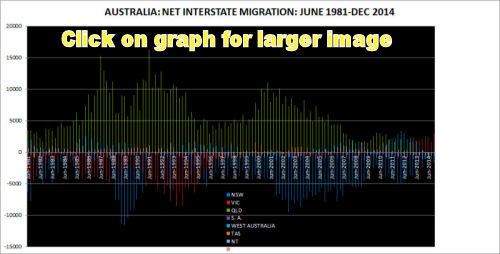
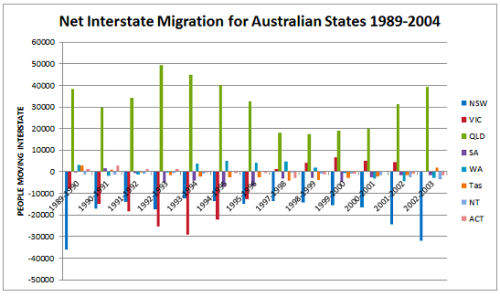
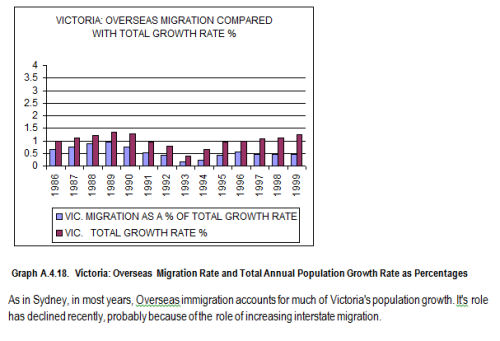
 UPDATE 29 September 2015, Click
UPDATE 29 September 2015, Click 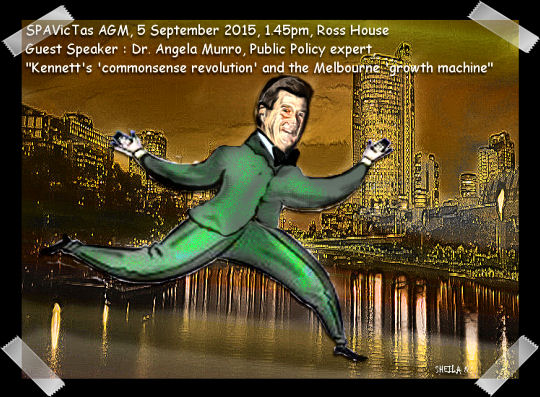 Sustainable Population Australia,
Sustainable Population Australia, (Video inside.) Once again Nick Folkes and his Party for Freedom have come up with a very effective way to protest against foreign ownership and overpopulation through invited economic immigration and its impacts.[1] Other groups would do well to imitate these democratic initiatives especially if they differ with Party for Freedom on issues of multiculturalism but care about housing affordability and democracy, rather than simply trying to shut Party for Freedom up and, in the process, allow the growth lobby to destroy Australia. In this video Folkes and his Party continue their campaign to make real estate agents and property developers think twice about selling built property to foreign nationals. They focus on the preponderance of Chinese foreign nationals purchasing Australian property. This cannot help but get attention since the Australian mainstream media constantly popularises this issue, although it does not promote any effective way of countering it. (Note that Fairfax and Murdoch press are heavily invested in property dot coms that market Australian real estate to the world: www.realestate.com and www.domain.com). In the video inside this article Mr Folkes engages effectively with people who show both positive and negative interest in the protest for which he is a spokesperson. What next, Mr Folkes, a protest at an Australian international airport, or on the road towards it?
(Video inside.) Once again Nick Folkes and his Party for Freedom have come up with a very effective way to protest against foreign ownership and overpopulation through invited economic immigration and its impacts.[1] Other groups would do well to imitate these democratic initiatives especially if they differ with Party for Freedom on issues of multiculturalism but care about housing affordability and democracy, rather than simply trying to shut Party for Freedom up and, in the process, allow the growth lobby to destroy Australia. In this video Folkes and his Party continue their campaign to make real estate agents and property developers think twice about selling built property to foreign nationals. They focus on the preponderance of Chinese foreign nationals purchasing Australian property. This cannot help but get attention since the Australian mainstream media constantly popularises this issue, although it does not promote any effective way of countering it. (Note that Fairfax and Murdoch press are heavily invested in property dot coms that market Australian real estate to the world: www.realestate.com and www.domain.com). In the video inside this article Mr Folkes engages effectively with people who show both positive and negative interest in the protest for which he is a spokesperson. What next, Mr Folkes, a protest at an Australian international airport, or on the road towards it? This short article around a letter from Bob Couch, records how the ABC spontaneously contacted a candidate for an alternative political party to tell him that the ABC would not give him any time to talk about his policies. The candidate had not approached the ABC, they approached him. Candobetter.net has run a few articles about how the ABC excludes candidates outside the major parties and we are running this story because the issue is so important. The ABC should be informing Australians of all the political alternatives out there so that we can really choose people who will represent us on issues of concern. See also
This short article around a letter from Bob Couch, records how the ABC spontaneously contacted a candidate for an alternative political party to tell him that the ABC would not give him any time to talk about his policies. The candidate had not approached the ABC, they approached him. Candobetter.net has run a few articles about how the ABC excludes candidates outside the major parties and we are running this story because the issue is so important. The ABC should be informing Australians of all the political alternatives out there so that we can really choose people who will represent us on issues of concern. See also  The decision by the ABC to allow Zaky Mallah to appear on Q and A has attracted much criticism (Advertiser 25/6 and 26/6)). This has been defended by the ABC on the grounds it needs to represent a diversity of views.
The decision by the ABC to allow Zaky Mallah to appear on Q and A has attracted much criticism (Advertiser 25/6 and 26/6)). This has been defended by the ABC on the grounds it needs to represent a diversity of views.
Recent comments